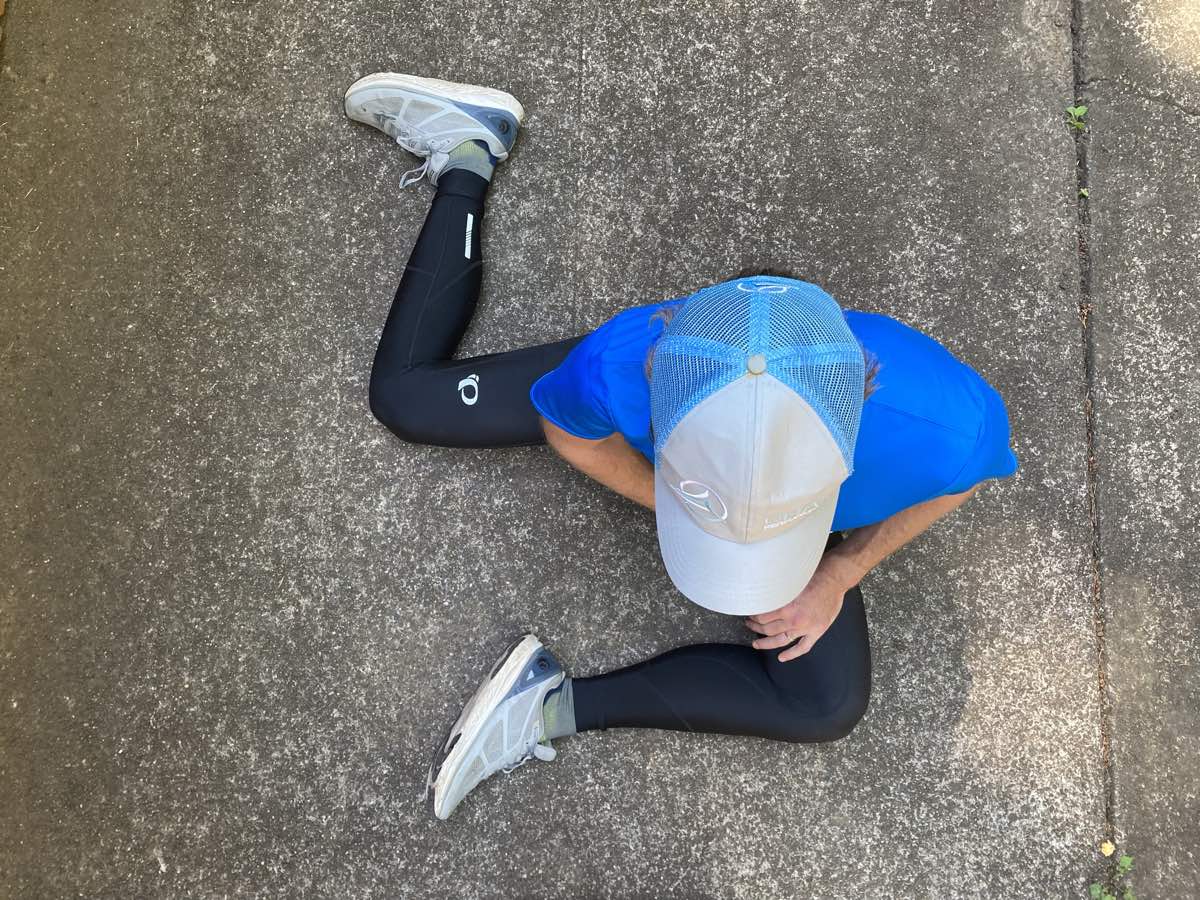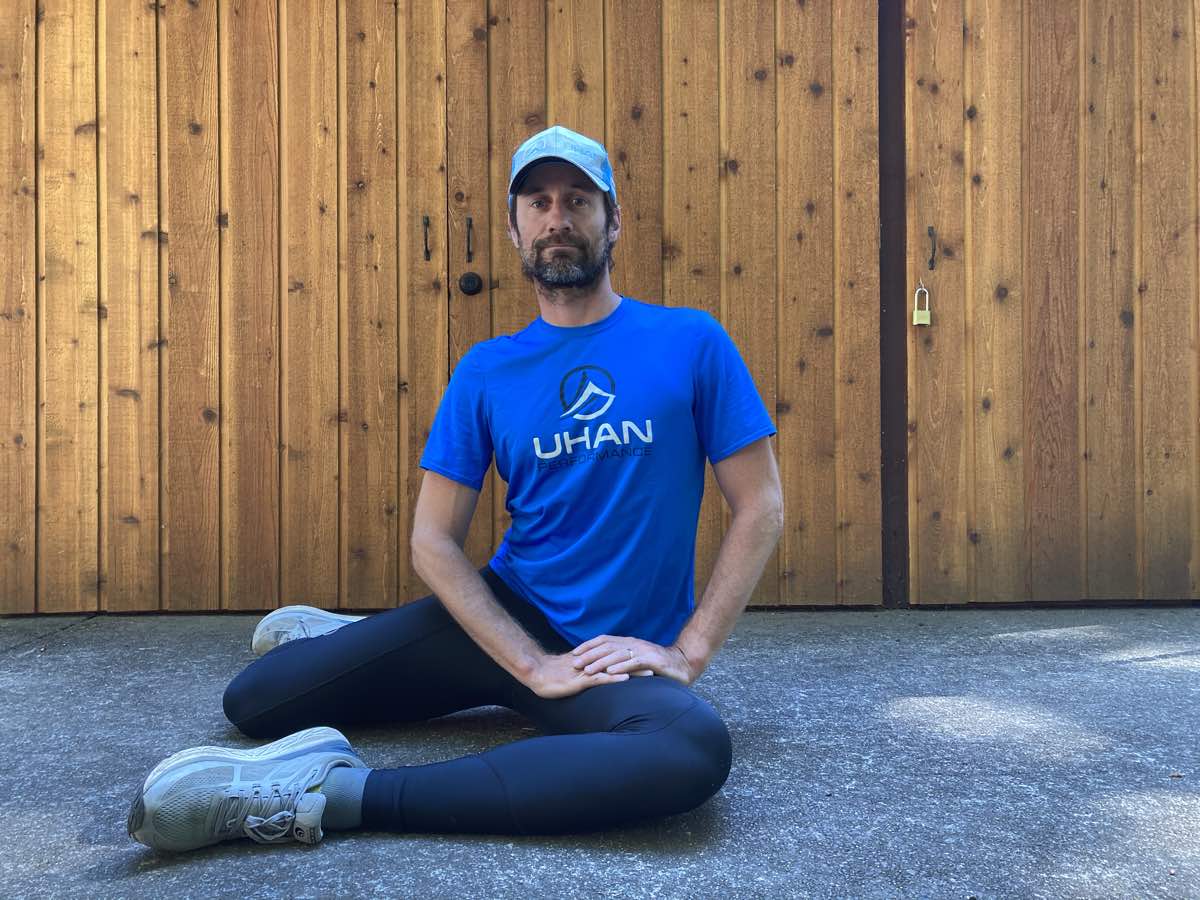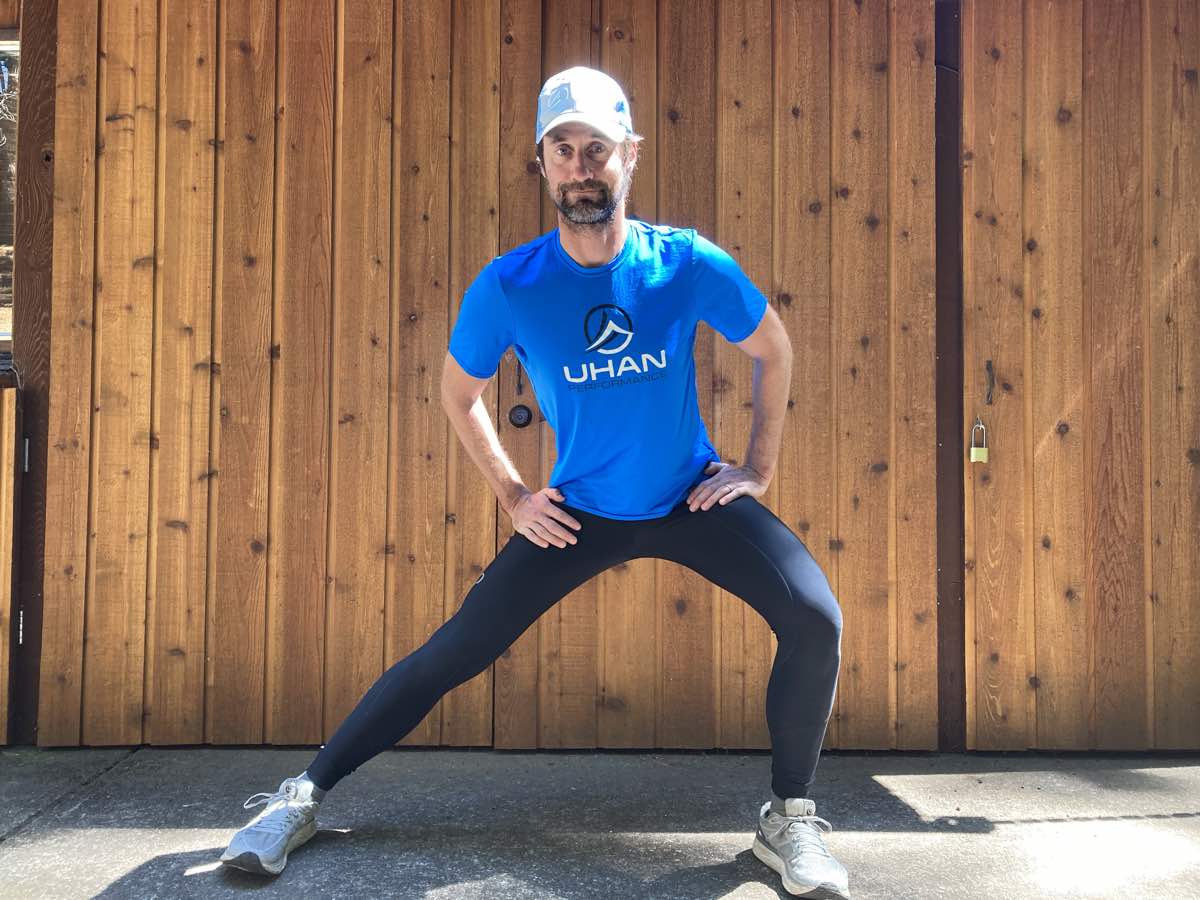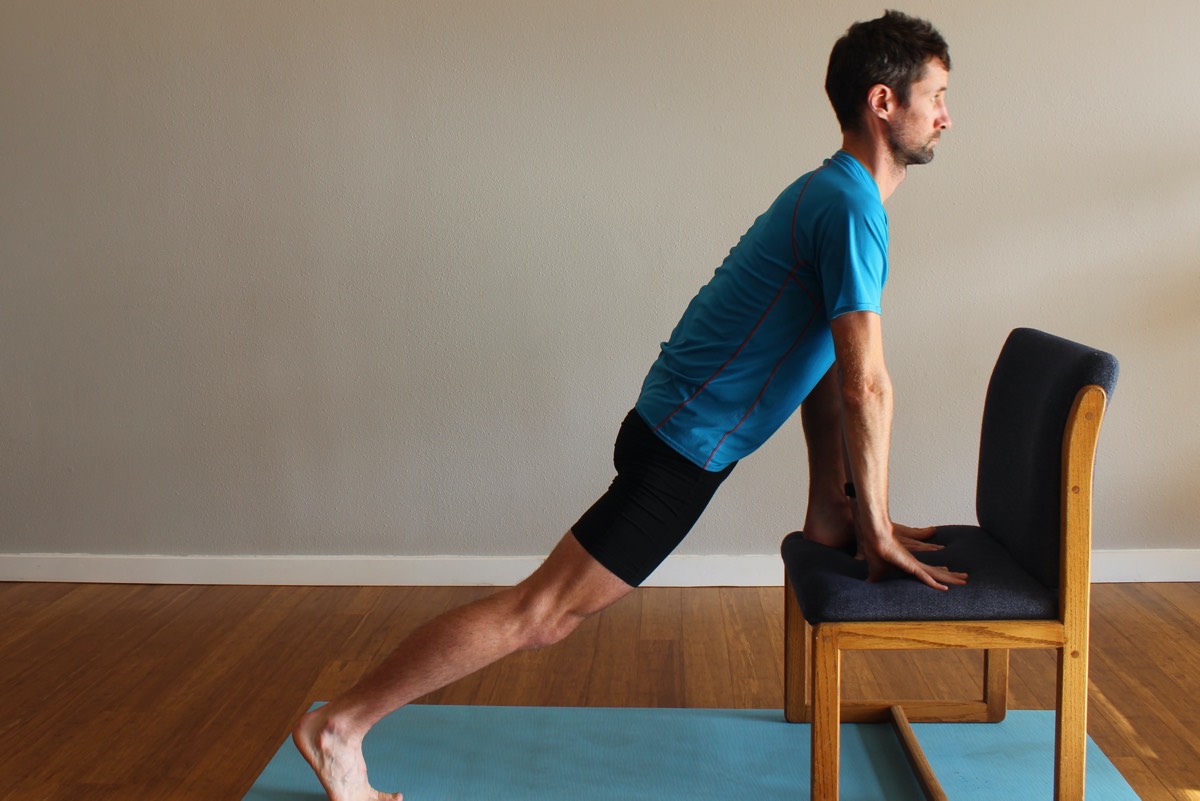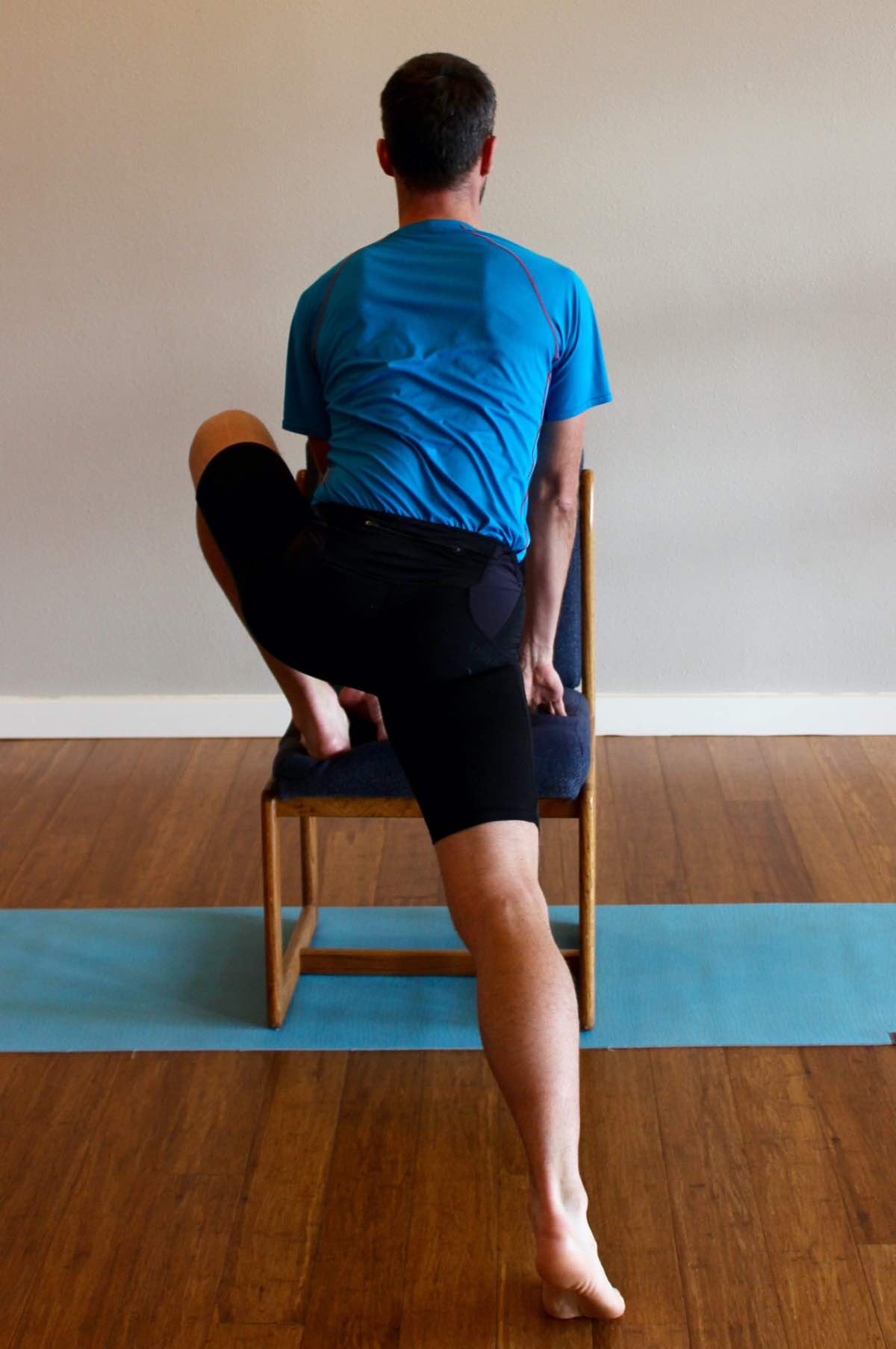[Author’s Note: This is Part 6 in a six-part series on functional mobility self-assessment and restoration for runners. See Part 1 on hip mobility, Part 2 on trunk rotational mobility, Part 3 on foot and ankle mobility, Part 4 on knee mobility, and Part 5 on trunk extension.]
It’s been a few years since I last wrote about performance mobility. Back in 2017, I put together a series of key range-of-motion metrics that help runners self-assess mobility in their hips (via flexion and extension), trunk, feet, and ankles. Recently, I have developed another key mobility metric, which assesses hip abduction and rotation. While subtle, hip abduction and rotation are particularly important hip motions for strong, efficient running and injury prevention.
The metrics are inspired from my work as a physiotherapist and my wish to empower runners to recognize their ideal range of motion, be able to routinely self-assess, and (when necessary) restore that ideal range with specific tools. This is a great alternative than standard physio prescriptions of “a life sentence” of pre- and post-run stretching exercises.
Background
The hip adductors line the inner thigh. Their general function is to pull inward, or adduct, the thigh toward the body’s midline. They are often overshadowed by their “glute” brethren; the gluteus maximus is key for pushoff power and the gluteus medius both stabilizes the hip and pelvis as well as assisting in pushoff.
Why is adductor strength and mobility important for healthy running? The adductors do two subtle-but-important functions. First, they stabilize. Upon landing, the adductors pull the thigh and pelvis together. While the lateral glute muscles keep us from falling over, the adductors help us from involuntarily doing the splits. That subtle contraction during stance phase keeps the thigh and pelvis in place, solidifies the hip joint, and helps assist the glutes to push off. Secondly, the adductors assist in the running motion. All of the five main adductor muscles aid in hip flexion; some fibers of the adductor magnus also assist in hip extension.
Hip-rotator muscles also have important but more subtle functions. Similar to adductors, the rotators have both stabilizing and propulsive functions. The hip rotators keep the ball of the femur centered efficiently in the socket of the pelvis–both in stance phase as well as throughout the forward and rearward running motion. Their subtle motions are key for peak stride efficiency. In flexion, the hip should lightly, externally rotate. In doing so, it sets up the leg to land in an efficient, knee-out position. Then, during pushoff, the hip internal rotators get to work, counterbalancing the powerful glute max to help achieve full hip extension range and power.
Both muscle groups are key for trail runners and ultrarunners, for whom stabilization and propulsive endurance is at a premium.
Helping Too Much: Tight Hip Adductors and Rotators Grind You Down
Both the adductors and rotators are helpers. While their assistance is key for strong running, what happens if they over-help?
Adductors are notorious over-helpers. While they should assist in both hip flexion (forward drive) and extension (pushoff), when they over-help, they over-work and get excessively tight. Progressively tight adductors can tug the femur too far medially, which pulls the hip off-axis and impairs the very motions they’re trying to help! Like walls closing in, the tighter the adductors become, the harder it is to flex and extend the hips, and the more the adductors will over-work! This downward spiral smothers the hip flexors and glutes–and our efforts to stretch and strengthen these areas! Impaired hip efficiency from tight adductors can cause myriad aches, pains and, performance issues which we’ll discuss in the balance of this article.
Thus, in addition to mobile and strong hip flexors and glutes, normal adductor mobility is a key factor in running efficiency and injury prevention.
The Hurdler Stretch: The Hip Abduction and Rotation Metric
Like the other metrics in the performance-mobility series, this is also a key restorative stretch.
Details: Sitting on the ground, place your legs in a “hurdle” position with your forward leg externally rotated (with the inside of the ankle pointing to the sky) and the trailing leg lateral and internally rotated (with the inside of the ankle on the floor).
Goals:
- Symmetry – Like the previous mobility tests, symmetry between sides is most important to avoid imbalances and injury.
- Thighs flush to the ground – Both forward and trailing thighs should lie flat.
- Upright posture – Trunk and pelvis should be upright, ideally without a hand assist.
- Knees flat – Both forward and trailing knees should be flush to the ground.
Common Deficits:
- Hip-abduction deficit – This may be present when the trailing thigh cannot get to the ground. Deficits may include the adductor-muscle group, hip-joint tissues, or both.
- Hip-rotation deficit – This may be present when either knee fails to get flush to the ground. Forward knee elevation indicates a hip external (lateral) rotation deficit, while trailing knee elevation indicates a hip internal (medial) rotation deficit.
Implications:
A lack of hip abduction and rotation may cause:
- Lost hip mobility and power – While the adductors are supposed to help with running, excessively tight adductors can restrict the free, efficient, and powerful flexion and extension motion.
- Hip impingement – Tight hip adductors can pull the hip ball slightly off-axis within the socket. Similarly, tight hip rotators cannot perform the subtle movements that efficiently maintain and move the hip ball in the socket. Either issue can cause hip impingement, a condition where tissues around the hip joint can become pinched, irritated, and painful.
- Adductor strains – A tight adductor group is more susceptible to strain. But due to the reciprocal nature of our stride, a tight adductor on one side of the body will often cause the opposite side’s adductors to over-work, creating a strain. Addressing adductor muscle mobility on both legs is key to healing stubborn groin strains.
- Leg pain (hip, knee, ankle, and foot) – Tight adductors and hip rotators decrease hip efficiency. Any loss of hip efficiency can impair hip mobility, causing other groups to over-work to push off or over-reach to land, resulting pain on either end of the stride. Tight adductors can pull the thigh medially, causing knee valgus and knee pain.
- Low-back pain – Tight and inefficient hips transmit excessive strain to the lumbar spine and are a primary issue in low-back pain.
A lack of hip abduction and rotation may be an indicator of:
- Weak hip drive and pushoff – Adductors get over-used when either hip flexors or extensors (glute muscles) are weak, or if the hips are stiff into either flexion or extension.
- A knee-in landing pattern – If your knee buckles in upon landing while running, hip adductor and rotators stiffness is likely.
Restorative Exercises for Hip Abduction and Rotation Mobility
Here are some exercises to restore mobility in your hip abductors and rotators:
Adductor Self-Massage
Background – The adductors of the medial thigh can be a stubbornly stiff muscle group. Consider performing soft-tissue mobilization to this group, either with a foam roller or by a licensed massage therapist.
Side Lunge
Background – This is an easy, low-force, on-the-go adductor stretch. It can be done statically or as part of a side-stepping dynamic warm-up.
To perform – Place feet about double your shoulder’s width. Your feet should be straight ahead to start. Flex one knee and shift laterally, while the opposite knee remains straight. Apply pressure on the straight-knee thigh to increase stretch. Rotate the stretch-leg foot (internally or externally) to accentuate the stretch. Perform 3 to 10-plus repetitions of 1 to 20 seconds per side (up to 20 to 60 seconds per leg).
Hurdler Stretch
Background – The metric itself is among the most effective hip-adductor stretches which emphasizes the extension component.
To perform – See the previous description. To increase stretching force to the adductors, add extra pressure to the lateral thigh. For hip rotators, focus on keeping knees flat on the ground. Pushing a hand against a wall or furniture may also add stretch force, especially if you have difficulty maintaining upright posture. Perform 3 to 6 repetitions of 20 to 90 seconds per side (up to 1 to 2 minutes per leg).
Runner’s Lunge
Background – This is a favorite hip opener from Part 1 of the performance-mobility series. The lateral (wide stance) aspect of this stretch promotes hip abduction and extension.
To perform – Place a foot onto a knee-high object (a chair, a bleacher, a couple stairs, or similar sturdy objects), then drop your hands to either side of your front knee. Carefully place your trailing leg straight behind. Step laterally: this is the adductor-muscle stretch dimension. Rotate the trailing foot inward to accentuate internal rotation. Perform 3 to 6 repetitions of 10 to 30 seconds per side (up to 1 to 2 minutes per leg).
Ninja Stretch
Background – Because it is low to the ground, this is an advanced stretch for end-range hip-abduction mobility.
To perform – Begin in a low squat position with hands on the ground in front of you. Carefully straighten your stretch leg and place it straight laterally. Slowly relax your arms and allow yourself to lower into this semi-splits position. As with the standing lunge, optimize the stretch with foot medial and lateral rotation. Perform 3 to 6 repetitions of 10 to 30 seconds per side (up to 1 to 2 minutes per leg).
Focused Hip Rotator Stretches
We won’t cover these in depth here, but isolated hip-rotator stretches, besides the Hurdler Stretch, include:
- Joe’s Miracle Butt Stretch
- Pigeon pose
- Seated cross-legged stretch
Conclusion
Hip abduction is a key motion that is often overlooked in running sports medicine. If you have longstanding, stubborn aches and pains, see how you stack up in the Hurdle Stretch.
Call for Comments
- What are your favorite stretches to promote hip abduction and rotation?


